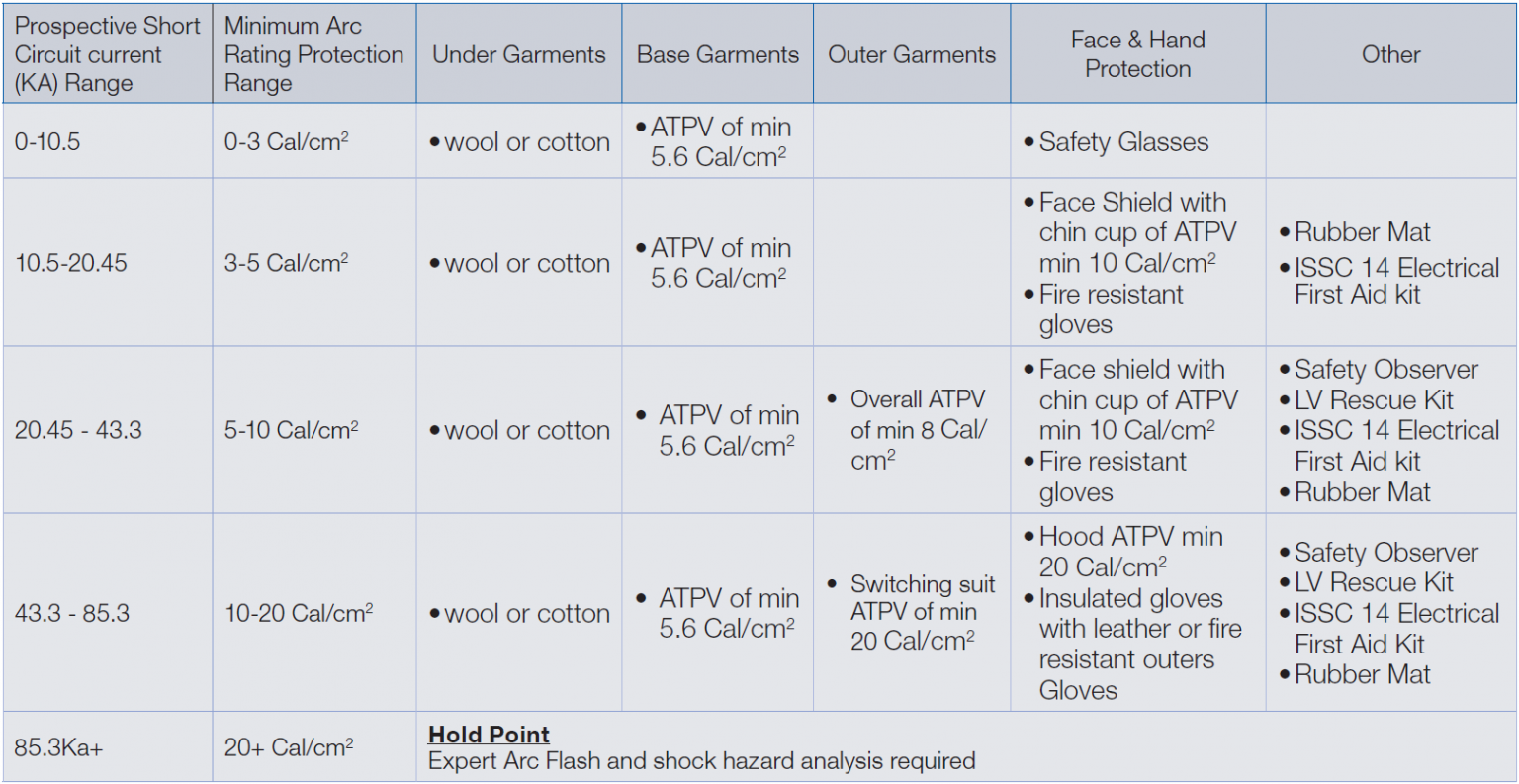There are a number of different ways to select the correct arc flash PPE. A simple and quick way is to make this assumption of fault levels. By using the kA rating of the main circuit breaker in the switchboard that you are working. The value of the kA rating determines how much current the circuit breaker can withstand under fault conditions. The circuit breaker only has to withstand this for a brief period, usually the time it takes for the circuit breaker to trip. For example, a value of 6kA means that the circuit breaker can withstand 6,000 amps of current during the brief time it takes to trip.
Line up your kA rating with the most appropriate row in the table below and utilize the recommended PPE. This table will also provide an estimate of incident energy (Cal/cm2). This can be used to determine minimal Arc Thermal Performance Value (ATPV). Your ATPV value needs to be greater than your estimated Cal/cm2
These are not considered as providing protection. They can be wool or cotton, but not synthetic fibres which could melt/burn and add to injury in the event of an arc flash.
These are long sleeved shirts and trousers, or coveralls. They should have a minimum ATPV of 5.6 cal/cm2
- Flame-retardant clothing covering the full body (including legs and arms) worn by electrical workers working on or near exposed energized conductors or live conductive parts
- Arc rated fabrics self-extinguish when exposed to an arc event. Preferably, fabrics that are inherently flame resistant – performance cannot be washed out or worn away over time.
- Shirts manufactured with a ‘closed front’
- Where button are used on shirt openings, they should be covered by a placket of the shirt material (known as a fly front design)
- The sleeve cuff should be designed to include a full gusset
- Retro-reflective materials used on garments should not contain conductive materials and should comply with the requirements of AS/NZS 1906.4.
- Labelling should include the APTV including the unit of measure
These are worn over base garments and provide added protection in the event of an arc flash.
They include:
- Coveralls
- Switching jacket
- Switching coat
- Leggings
- Overpants
- Bib and brace coveralls
Insulating gloves may be worn under arc rated gloves. Alternatively, composite gloves may be worn.
Arc rated face shield with chin cup or shroud should be worn if the potential incident energy is over 3 cal/cm2

